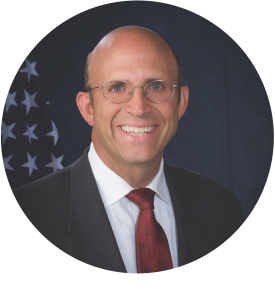Old Blue Skies Overview
Gateways to Blue Skies Overview
The Gateways to Blue Skies competition (aka, Blue Skies) was developed to expand engagement between universities and NASA’s Aeronautics Mission Directorate’s (ARMD’s) University Innovation Project. Gateways to Blue Skies projects allow students to work on real aviation/aeronautical design concepts and work together in a team environment. Blue Skies is open to teams of undergraduate and graduate college students who have an interest in aviation and/or aeronautics. Initial participation involves a design study, submission of a 5-7 page research paper, and creation of an infographic that summarizes the team’s design.
Through Blue Skies, NASA hopes to reach as many college students as possible. Submissions from ALL academic levels (i.e., freshman, sophomore, junior, senior, and graduate) are highly encouraged and anticipated.
Through the 2022 Blue Skies Competition, teams of 2 to 6 students will design a 2050s airport (focusing on the exterior of the airport) that can support the climate friendly planes and aviation markets of the future. This challenge seeks ideas and designs for the evolving airports of 2050 as we push towards climate friendly aviation and new emerging aviation markets. As our aviation technologies and markets change, new airport designs will be needed to support them.
Based on the review of research paper submissions, up to 8 teams may be chosen to present their findings in a competitive design review during the Gateways to Blue Skies Forum at NASA’s Langley Research Center in Hampton, VA next June. Each finalist team will receive a monetary award to facilitate full participation in the Forum. Internship opportunities with NASA’s ARMD serve as the competition prize for members from the winning team.
Eligibility
The Gateways to Blue Skies competition is open to full-time or part-time undergraduate and graduate students at an accredited U.S.-based community college, college, or university. Teams may include senior capstone students, clubs, multi-university teams, and/or multi-disciplinary teams.
Eligibility is limited to U.S. Citizens. Foreign students and foreign universities are not eligible to participate in this challenge
UNIVERSITY DESIGN TEAMS MUST INCLUDE:
- At a minimum, teams must contain one US citizen faculty advisor with a university affiliation at a U.S.-based institution, and 2 U.S. citizen students from a U.S.-based university who work on the project and present at the Blue Skies Forum.
- Team size is limited to a maximum of 6 student team members.
SPECIAL ELIGIBILITY CONSIDERATIONS:
- An individual may join more than one team.
- A faculty advisor may advise more than one team.
- A university may submit more than one technical paper.
- Team members may not be a Federal employee acting within the scope of employment (this includes co-op students with civil servant status)
- The expectation is that Blue Skies projects are student-led initiatives (i.e., students are doing the work).
- Faculty take on the role as mentors, and if a team is selected as a finalist, help manage any monetary awards sent to the university.
Participation Awards
Teams selected to present at the Forum will receive a $6,000 monetary award to facilitate full participation in the Blue Skies Forum, held at NASA Langley Research Center in June 2022.
Prizes
NASA ARMD is setting aside up to 6 internships for students on teams that advance to the Blue Skies Forum. Selections will be made first to students on the winning team(s) and will based on the cumulative merit of each student’s individual internship application and availability for fall, spring, or summer internships.
- Fall: Late August/early September to mid-December (16 weeks)
- Spring: Mid-January to early May (16 weeks)
- Summer: Late-May/early June to August (10 weeks)
Note: NASA internships have additional eligibility requirements:
- Cumulative 3.0 GPA (on a 4.0 scale)
- Undergrad and graduate students must be enrolled full-time in a degree-granting program at an accredited college or university
How to Compete
- Thoroughly review the 2022 Competition webpage and full competition guidelines
- Find a qualified advisor and a diverse team of students
- Ensure that your team meets the eligibility requirements
- Submit an NOI by the deadline
- Attend the Q&A session with the challenge sponsors
- Develop and submit a Technical Paper, Infographic, and 2-minute video by the deadline
- Technical papers are reviewed and evaluated by the Blue Skies judges
- Based on a review of the technical papers, up to 8 teams will advance to the next phase of the competition – presenting their design concepts in a face-to-face design review during the Blue Skies Forum at NASA’s Langley Research Center.
- Winning team members receive NASA internship offers
Dates & Deadlines
| Date | Description |
|---|---|
| Rolling, until Feb. 28, 2023 | Notifications of Intent (NOI) deadline Submit an NOI |
| October 26, 2022 | Deadline to submit Questions for Q&A Session Submit a Question |
| November 3, 2022 3:30 - 5:00 PM ET | Q&A Session #1 for interested teams |
| January 26, 2023 3:30-4:30 PM ET | Q&A Session #2 for interested teams |
| February 28, 2023 11:59 PM ET | Deadline to submit Proposals and Videos via online upload tool Submit a Proposal |
| March 28, 2023 | Teams are notified of their selection status |
| May 1, 2023 | Deadline for Hotel Reservations at Gateways to Blue Skies Group Rate Forum Information |
| May 1, 2023 | Deadline for Forum Registration and Payment for the Gateways to Blue Skies Forum Forum Information |
| May 14, 2023 | Deadline to submit Final Research Paper & Infographic Submit Final Research Paper & Infographic |
| May 29, 2023 | Deadline to submit Presentation/Chart Deck Files (Noon EST) Submit Presentation Chart Deck |
| June 1-2, 2023 | 2023 Gateways to Blue Skies Forum at NASA's Glenn Research Center |
 Cordelia Hiers-Brady
Cordelia Hiers-Brady Dan Martin
Dan Martin Shawn Engelland
Shawn Engelland George Burba
George Burba CJ Bixby
CJ Bixby Amy McCluskey
Amy McCluskey
 Mina Cappuccio
Mina Cappuccio Dr. Shanna McClain
Dr. Shanna McClain Phil Kenul
Phil Kenul Starr Ginn
Starr Ginn Dr. Marcus Johnson
Dr. Marcus Johnson Jay Stalnacker
Jay Stalnacker Charles Sheehe
Charles Sheehe Travis Potter
Travis Potter Peggy Cornell
Peggy Cornell Susan Bayley
Susan Bayley Matthew Boucher
Matthew Boucher Dr. Natasha Neogi
Dr. Natasha Neogi Craig Nickol
Craig Nickol Janice Kurbjun Miller
Janice Kurbjun Miller Koushik Datta
Koushik Datta Genevieve Ebarle
Genevieve Ebarle Shelley Spears
Shelley Spears Stacy Dees
Stacy Dees Andrew Provenza
Andrew Provenza Steven Holz
Steven Holz Mani Gavvalapalli
Mani Gavvalapalli Devin Pugh-Thomas
Devin Pugh-Thomas Jeanne Yu
Jeanne Yu